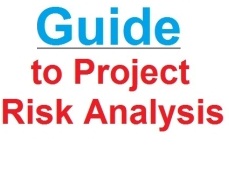Business Case Template
 A business case is a fundamental part of the project management process. This decision making tool aims to convince senior management of the need to invest resources in a proposed project rather than in other competing alternatives. A business case also helps analyze the financial and non-financial outcomes following from the project to determine how costs and revenue will change and what effects will occur after project completion.
A business case is a fundamental part of the project management process. This decision making tool aims to convince senior management of the need to invest resources in a proposed project rather than in other competing alternatives. A business case also helps analyze the financial and non-financial outcomes following from the project to determine how costs and revenue will change and what effects will occur after project completion.
This Business Case Template describes typical items to be included in a business case. It also gives some suggestions regarding document writing and presentation styles. This template will help business analysts, project managers, sponsors and other decision makers review the arguments for or against a proposed project. It is available for free downloading.
Key Components of a Business Case
A complete and comprehensive business case comprises a number of essential components. Those components can be sorted out and presented in a different manner, depending on the author’s view regarding the proposed project. However, the author must ensure that every broad category listed below is included in the business case document.
Remember that the more precisely and completely you address each of the subjects, the better your business case will be designed and therefore the more likely your project will be verified by sponsors for investing.
Cover Page
The Title page of your business case document should be descriptive enough to let the reader understand the nature of your analysis and the project under consideration. The cover page should explain the context of your research in terms of project name, dates, ownership, and other essential data.
Consider these suggestions when designing the cover page for your business case template:
- Type the main title of the document
- Add the project’s details, including name, owner, and a short description
- Use sub-titles to add clarity to the main title
- Type the author’s name and qualifications
- Add the distribution list
- Specify the intended audience
- Insert date
Versioning
Versioning helps the reader understand the relevance and accuracy of your business case. Through versioning you can specify time-related information and corrections made to the document.
The Version page usually comes after the Title page. When you update your business case, be sure to edit the Version page with this data:
- The date of creation (typed once after the document is created)
- The dates when the document has been edited
- The latest revision date
- A summary of corrections made to the business case
- Names of editors
- Comments and notes
- The date of original completion
Executive Summary
Just like any other formal project document, a business case includes the Executive Summary page which is a short story of the entire report. This page tells readers whether the information in the document is worth their time. By the way, Executive Summary is often the only thing most people read first of all. So be very creative and accurate when writing this page.
Follow these tips when you design the Executive Summary page of your template business case:
- Start writing the executive summary after your research is done (so you’ll know which recommendations to make)
- Try to be short yet complete and comprehensive
- Express the essence of your research in a few terse sentences
- Specify the purpose and recommendations of the business case, including what’s proposed, what action is expected from the reader, and what information is presented
- Include both formal and numerical data that support your recommendations
Table of Contents
The contents page of a project business case specifies the sections and sub-sections included in the document and their corresponding page numbers. It should set out the structural relationship between the main content items. The Table of Contents aims to help readers locate specific information in the appropriate section easily and quickly.
Here’re several common suggesting regarding designing the Table of Contents page:
- Start designing the contents page after your template business case is written
- Divide the document into logical parts or chapters
- Be sure to set out sub-title under appropriate sections or chapters
- Add page numbers accordingly
- Be sure to list all the topics in the contents
- Try to make your table of contents no longer than 1 page
Introduction
The Introduction page should consist of several short enough paragraphs briefly describing the scope and background of your project. It aims to provide the reader with a clear understanding of the motives and objectives behind the project under discussion.
Take into account these suggestions when developing the Introduction page of your business case document:
- Include a reference to the purpose and findings of your research
- Describe explicitly what your project is about and why you undertake the analysis
- Refer to the business outcomes that follow from the proposed project
Data & Methods
This section of a project business case explains readers how research data was developed, analyzed and measured. The sources of data should be specified and the analysis approach along with metrics should be explained. Any assumptions made to the research should be described as well.
Follow these best practices for developing the Data & Methods section of your business case template:
- Explain the methods used to set values for soft benefits of the project
- Specify project assumptions made for the research
- Present the metrics used to judge project analysis findings
- Let the reader know how you used the metrics across the business case
Financial Analysis
The overall goal of any business case in the field of project management is to analyze and judge the financial issues of a proposed project. The document highlights economic considerations rather than something like technical or legal. That’s why a financial analysis should take the central role in the research.
The Financial Analysis section defines and assesses project cash inflows and outflows to evaluate the project against certain financial performance ratios, such as ROI, net cash flow, expense ratio, and so on. The section determines whether or not the proposed project brings about acceptable financial results.
The Financial Analysis section of your project business case should be developed under at least these considerations:
- Project investment cost
- Operating costs and revenues
- Cash-flow analysis
- Financial ROI
- Sources of financing
- A list of scenarios the project may follow
- Decisions regarding financial return to capital
- Financial sustainability assessment
Feasibility Analysis
A feasibility analysis aims to identify the potential issues and related resolution with respect to technical, legal, economic, regulatory and managerial aspects of a project under consideration. The analysis aims to verify whether or not the project design is feasible in terms of the constraints relevant to the company that performs the project.
Consider these tips when designing the Feasibility Analysis section of your template business case:
- Be sure that the project is authorized for research
- Carry out a demand analysis along with a needs assessment to make sure the project is needed
- Provide options analysis findings to tell why the project is better than other alternatives
- Provide a confirmation of available technology required for the project
- Report on the project’s relevance to the business environment
- Review project requirements regarding personnel, tools & equipment, quality, communications etc.
- Consider environmental aspects (if relevant)
Risk Analysis
Traditionally, a project risk analysis is focused on assessing probability that a proposed project will achieve a satisfactory performance level at any given point in time throughout the project lifecycle. In a project business case, the analysis of risks aims to make a prediction that the project will finish on time, under budget and as per specifications.
When designing the Risk Analysis chapter, include at least these suggested items:
- Sensitivity analysis
- Probability distribution for critical variables
- Distribution of the financial performance indicators affected by risks
- An assessment of acceptable levels of risks
- Suggestions regarding risk mitigation
Recommendations
The Recommendations section reports on the findings of the research, with specific follow-up action. It tells the reader what actions are suggested for implementation. Sometimes this section asks the reader to agree on or approve some form of action regarding the proposed project.
Follow these suggestions when writing the Recommendations section of your sample business case:
- Generate your recommendations after the research is done and you have all necessary data
- Keep your recommendations as clear and concise as possible
- Focus on the benefits to be received from the project
- Consider expressing specific actions required of the reader
- But be sure your request is unambiguous regarding what it involves
Glossary
The Glossary section presents an alphabetical list of terms and phrases used in the business case. It is a brief dictionary that helps readers understand the right meaning of one or another word or expression. Although Glossary is not necessary, it is a best practice of business case writing to include a detailed glossary list in the document.
Here’re some suggestions regarding developing the Glossary chapter of the business case document:
- Start developing the Glossary section after your template is done
- Record all unusual and document-specific terms you used in the template
- Be sure to define each term clearly, comprehensively and correctly
- Format the Glossary in accordance with your writing style
Annexes
Supporting material that makes project research sound and reasonable is the necessary item in a business case. Appendices include information that has been referred to within the document. The Annexes section helps the reader gain better insight into the project.
When you create the Annexes section of your business case document, consider these suggestions:
- Separate and label each type of data within the appendices
- Never include materials that just make your business case template look more significant
- Use appropriate annexes to support your recommendations
- Arrange supporting material in a comprehensive order that relates to the body of your document
Writing and Presentation Suggestions
Follow these requirements when writing your business case:
- Select a document formatting style for your template (e.g. MLA, AAA, CSE, APA, etc.)
- Write in terse business manner
- Never use either descriptive prose or poem style
- Use short sentences, small words and tiny paragraphs
- Add sub-titles to make the material more readable and easy-to-understand
- Be consistent with heading styles
- Use bulleted lists to make the text more visually capturing and interesting
- Follow a selected design pattern throughout the entire document
Consider these suggestions when presenting your project business case to the audience:
- Prepare a speech about your report
- Be realistic but sound optimistic
- Prepare support materials (reports, graphs, tables, etc.) for the listeners
- Be gender-neutral
- Consider using specialized tools, equipment and computer software during the presentation
- Be ready to answer questions and settle your research findings.














